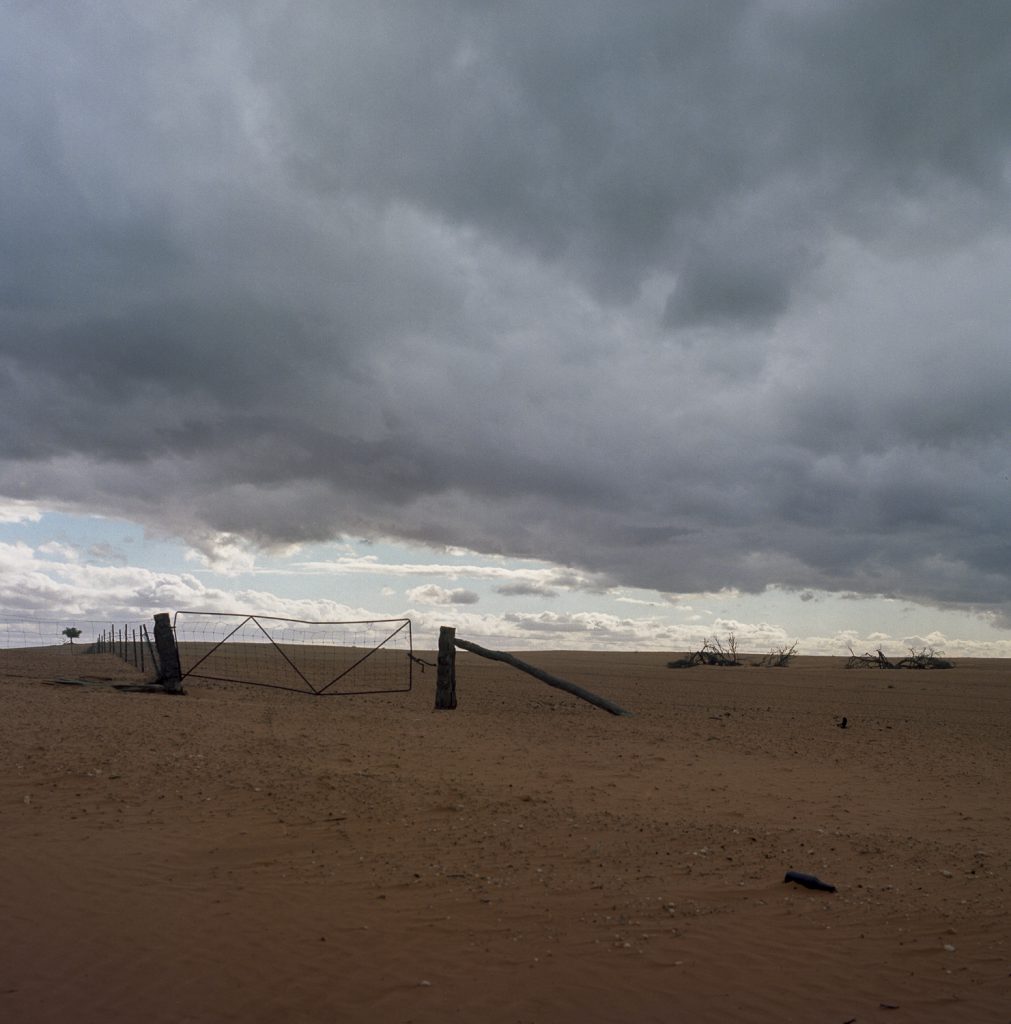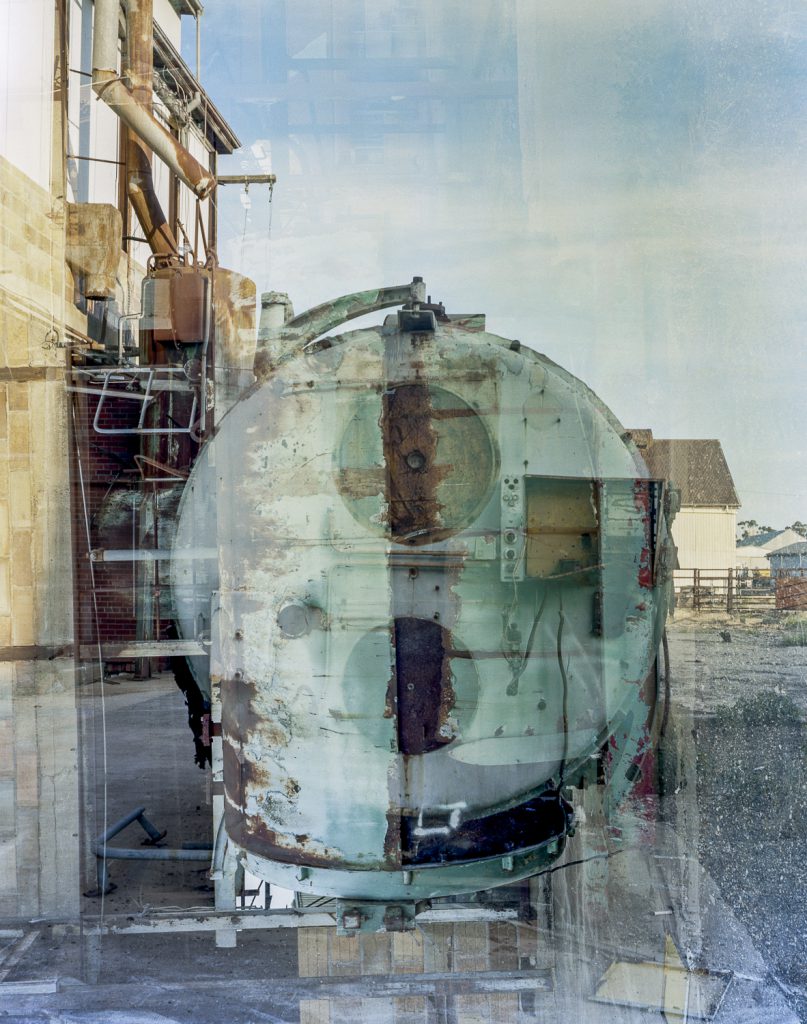The realist and “topographical” approach of the photographers, being largely documentary, is juxtaposed with a post-conceptual awareness, taking heed, as Sauer-Thompson explains, that many now agree that the purpose of so-called “contemporary art” (if it needs a purpose) is “to engage in a critically reflective way with the world in which we live”. The post-colonial subtext hints of the missing histories of these eroded, ancient landscapes, prior to European settlement and exploitation.

Overall, the exhibition relates a grim story of abuse of the land, pragmatism, economic rationalism, overcropping and overstocking, and ultimately degradation. It exposes a failed or failing culture that set out to raze the original land then build upon that tabula rasa to suit prevailing capitalist systems that often proved to be unsustainable or became obsolete, because of changing technologies and climate, and modernising human behaviours. All this emerges through the eyes of the photographers who are attracted to their own subject matter within the exhibition’s themes, within the vast landscapes and big skies stretching from east of Adelaide to the northern boundaries of the Murray, lower Darling and Murrumbidgee rivers and the southern border of the Dukes and Western highways.
Eric Algra is attracted to quirky and often amusing details and observations of human culture via traces of human presence; Stuart Murdoch observes legacies of human occupation and alterations of landscape; Gilbert Roe turns his attentions from contemporary agricultural or industrial uses and signs of human activity to pinhole studies of landscape details blurred through long exposures; Lars Heldmann engages more with ecological disturbances and transgressions of nature, often working in collaborative sculptural forms but also in a solo installation; and Gary Sauer-Thompson has a broader scope in his photographs, covering a wide range of subjects and presentations in both black and white and colour, and using varying framing systems.
The themes mentioned are threefold: Absent History, Space/Place, and Unknown Futures. The first occupies the Jean Simms gallery, and features work of historical orientation and mythologies, in black and white. The second occupies the main room, and is largely in colour except for the wall of work by Gilbert Roe, who works exclusvely in black and white, whether with large format or pinhole cameras. The third room heads in a more sobering and sculptural direction, gravitating around Heldmann’s large floor installation Coked up marry darling, comprised of a mock salt pan and a blow-up of a discarded soft-drink bottle half buried under rock salt.
The landscapes depicted are often hopelessly compromised or completely ruined in terms of present and future potential, through their erasure of biological and cultural histories. Many of the places are ghost settlements or declining towards such an outcome. They are haunted by earlier settler usage, with overgrown and decaying sports and entertainment hubs of boom times side by side with abandoned buildings, facilities and engineering.

Many of the structures shown are like rotting corpses with their bones and dismembered garments and flesh strewn about, the detritus and vestiges of a murder of culture, or a culture of murder, through systematic erasure, neglect, changes induced by modernity, decomposition, and natural erosion. The lifeblood of the landscapes and the settlements with agricultural and industrial economies, the rivers, have been overextracted and the land is succumbing or has succumbed to overgrazing, overcropping, toxification or salination. These images speak to unknown futures but the predictive outcomes of the Anthropocene are already sensed, deep in our own bones, for it may well be too far gone.
As Gary Sauer-Thompson describes it:
“Today, the Mallee region is a kind of industrialised agricultural land factory where the scrub has been cleared once and for all. In the process animal and bird habitat were systematically destroyed to make way for more cleared acreage. The ancient ecosystems were shattered and now exist only in fragments or remnants. This ecological destruction coupled with the present day chemical poisoning and genetic modification was for capital accumulation and profit.”
Coupled with the 2019–20 severe wildfires in the Adelaide Hills and Kangaroo Island and across widespread areas in most other states, it is evident that we are now living with 21st century legacies of short-termism, reckless optimism and failed environmental policies. Without necessarily setting out to do so, the sum of the exhibition’s parts reveals this wider picture with crystal clarity, and leaves us with the question of whether there’s a better way forward that can be forged from experience and knowledge.


there we go . . . and finally the voice is coming forward to be heard. The real intentions: why we photographers show in images the story, the evidence, the truth of what we humans are doing to Mother Nature – OUR environment
Thank you Gary and team, to publicise the issues from history to now, in to our community and broader audience
Thanks you Lars – for your a great contribution to the exhibition, too.